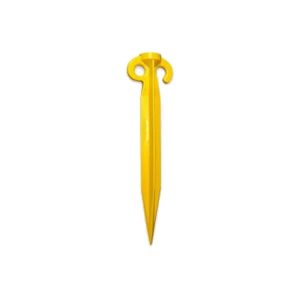Our dual battery set up
With the new Major 4×4 Prado 150, we’ve started off our modifications with what is one of our biggest needs – the dual battery system. Thanks to everything that was done to the car before we got it, we were lucky to have the major modifications already set up. With our plans the dual battery set up is the most important because almost everything that’s planned will need power in some form or another.
Step 1 – It’s already there!
The new car had the dual battery set up already installed. It was a good-looking bit of kit. Good deep-cycle battery, Piranha battery management system, a couple of outlets. That was… until we went to actually use it.
It seems that the battery that was in the car was on its last legs. When charging it held steady at 14.4 volts, so great! When the charging stopped the highest voltage that we could register across the battery terminals was 10.1V – and that’s why no load on it at all. So, time for a new battery!
Step 2 – A new deep-cycle battery
We got a new 120AH battery to fit in nicely. Be aware that the capacity of your chosen battery may be higher or lower depending on what space you’ve got available, how big your battery tray is, and what you need to run from it.
We got it in, hooked up and checked. Charged at 14.4V as expected and had 12.8V when not charging. Just how it should be
Step 2 – Plug everything in
When the battery was in we hooked up our car fridge to check. This was using the standard 12V lead with the 12V cigarette lighter socket. The fridge turned on, did it’s checks, then promptly turned off again. That’s strange… it didn’t do that when it was hooked up to the 12V adapter in the house.
So, the multimeter comes out and we check the sockets in the back of the car. 12V showing, so should be all fine. Even turned on the car and got 14V at the socket. Must be something else.
It was. It turns out that the wiring that was used for the rear sockets was… lets just say less then optimal. With any sort of load applied to it, the required amps couldn’t flow properly. For a (very) small LED light it would work OK, but the fridge or air compressor would just not start. So much for that, so back to the drawing board.
Step 3 – Basic wiring
As we are planning to throw a whole lot more in than just a fridge and a light, we needed to make sure that what we did now would be 100% future-proof and handle that loads that we needed – and more.
To make sure that we were ready, we ended up installing a 2G wire from the battery right back to the cargo area. Up front, we used a 120amp circuit breaker instead of the more traditional fuse. The reasoning behind this is that a circuit breaker will do the same job and trip out if the load gets too high, but you had the added advantage of being able to reset it if it does trip. This means that you don’t have to carry spare fuses around for that application. That part is important to us as a 120amp fuse isn’t small, and isn’t something that you find at every outback service station.
At the rear we’ve got a 4-way splitter to distribute the power to where it’s needed. Right now it’s just a single outlet for the fridge, but that will change. Keep an eye out for what else we add soon!
Step 4 – Setting up the car fridge
This was the quickest step, as you can imagine. To get this right we made a modification to the fridges power lead to change the standard 12V plug to an Anderson plug to make sure that we have a quality constant connection that will allow more than enough power, and won’t rattle loose on the tracks.
The end result
We’ve ended up with a great base for our future expansion, and we couldn’t be happier. Well, not until I get permission from the better half to keep going on the next steps of the build-up!




